#army of thives
Explore tagged Tumblr posts
Text
I'm crying because Tumblr took away all the quality
Just watch me trying to assign a color to each character and failing pathetically in the attempt.

Vanderohe x Dieter agenda
Also, la coyote, (I love herrr so much), and a redraw of a screenshot


Additionally, a drawing of these two

And some drawings of Gwendoline cause I'm a fan

Refs ↓


#army of the dead#ludwig dieter#vanderohe#la coyote#lilly la coyote#gwendolyne starr#gwendoline starr#marianne peters#chambers#mickey guzman#mikey guzman#scott ward#maria cruz#maría cruz#kate ward#army of thives#sebastian schlencht wöhnert#dieter x vanderohe#artists on tumblr#art#vanderohe x dieter#fanart#need more coffee post
10 notes
·
View notes
Text

#11 - The army of Thives
seruu!! plotnya cepet jadi gak bosen.
Rate: 9/10
0 notes
Text
Can you stay with me and hold my hand when Hiccup's dad dies?
Red onions are obviously purple
#its actually army of thives not httyd2#but I can think of a moment in army of thieves where I cried soooo#can't****
502 notes
·
View notes
Text
COMMISSION! in the source link, you’ll find TWO HUNDRED AND FIFTY gifs of the actor MATTHIAS SCHWEIGHOFER in ARMY OF THIVES (2021). all gifs were made by me from scratch, therefore i’d appreciate if they are not edited, redistributed, added to other gif hunts or claimed as someone elses. if you enjoy or plan on using them, please like or reblog the post. if you enjoy my work, please consider buying me a coffee!



#matthias schweighofer gif pack#matthias schweighofer gif hunt#gifsociety#rph#rpc#gif commissions#rp commissions#fcxdirectory#gif pack#supportcontentcreators#useremmy#mine*
52 notes
·
View notes
Text
Research: Project Finish
Tim Sale
Tim Sale is a famous comic book artist, who had worked in several titles along with the writer Jeff Loeb, including Batman, Spider-Man, Superman, Daredevil, and many others.
Tim Sale was born in may of 1956, in New York, where he studied visual arts, spent a good time of his life in Seattle, and today he lives in California.
For some years he drew his art privately, only to please himself. When he found himself working at a fast food in his late twenties, however, he decided to try to sell some of his work. This led to an association with Thives’ World Graphics, a fantasy anthology series, where he illustrated stories.
What most marks his work is the dramatic aspect that he manages to obtain in the characterization of his characters and in the scenarios he creates, making the stories unique and immortalizing the characters.
The union of Sale’s art with Loeb’s engaging narrative has become the perfect marriage for mysterious plots.
One of the most striking characters worked by Sale was Batman, which he drew “The Long Halloween”, “Dark Victory” and “Halloween”. He was able to fully transfigure the dark aura of Gotham and his Dark Knight. He also worked with Superman in the saga “ Superman for All Seasons”.
Both of The Long Halloween and For All Seasons are what is known as “Year one” comics. These works take their heroes back in time to their earliest days of crime fighters.
His main tool is watercolor, which he uses with mastery. Sale's palette of colors is something really impressive, always drawing and painting his characters very delicately, and calmly. His style is very cartoonish, although this does not diminish his art in any way, on the contrary, his style is very unique and characteristic.
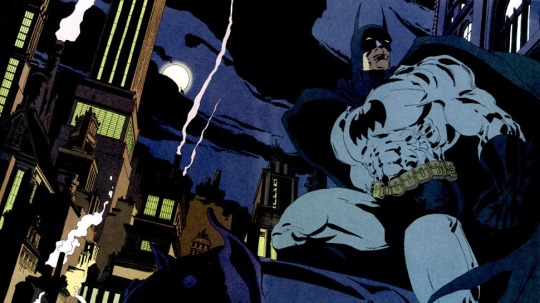
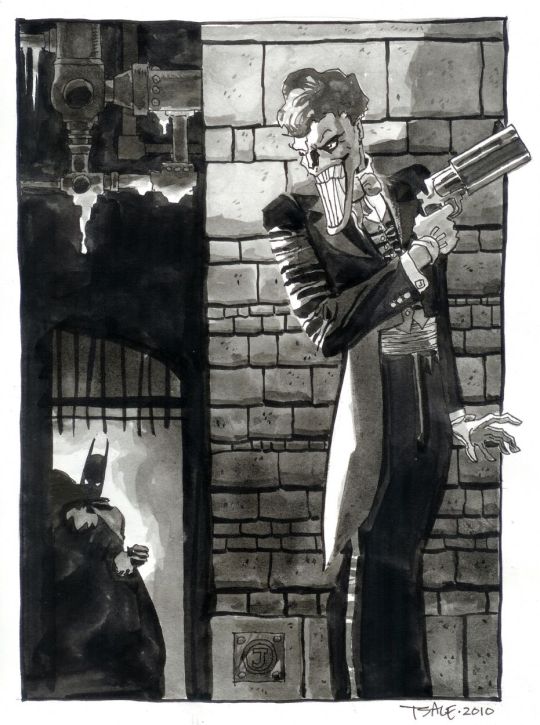


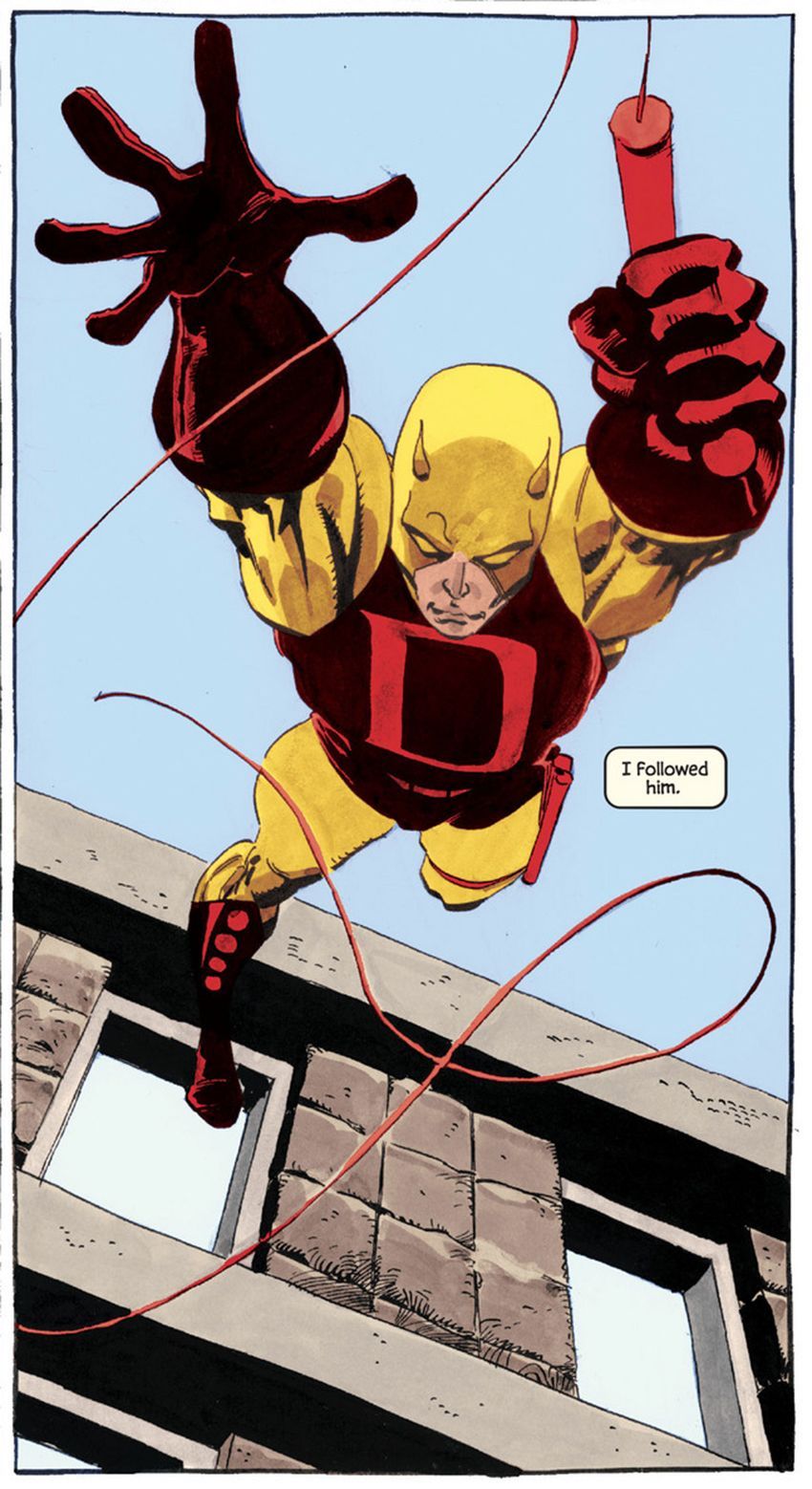
Pedro Franz
Is a Brazilian comic book artist, who was born in Santa Catarina and has a degree in design.
He has been publishing several comic books and participating in exhibitions in Brazil and abroad. As an illustrator, he has published works several magazines and books, and regularly collaborates with the Piauí magazine. As a graphic designer, he is a contributor to the Par (Ent) Esis platform. He has comics translated and published in English and Spanish, and has good international recognition, thanks to his publications.
But what is most impressive in Pedro's art, perhaps is his intensive use of colors. Mixing various shades of different colors, mixing different compositions. In addition to sometimes using characters from pop culture, with his elaborate style.
Despite liking traditional comics, he has always published and worked for national publishers, often with authorial works.
Perhaps his best known work, which was even published in the United States is the comic “Suburbia”.
Suburbia tells the story of Conceição, a girls daughter of enslaved rural workers, who flees to Rio de Janeiro in the early 1990s. In the city, Conceição begins to work as a cleaner and to get involved in the world of funk, slums and poverty.
His drawings are extremely surreal, not exactly following a traditional way of making comics, with several images spread across the page, with different shapes and sizes, with extremely strong colors, mainly valuing blue, purple, yellow and red, as his main colors.
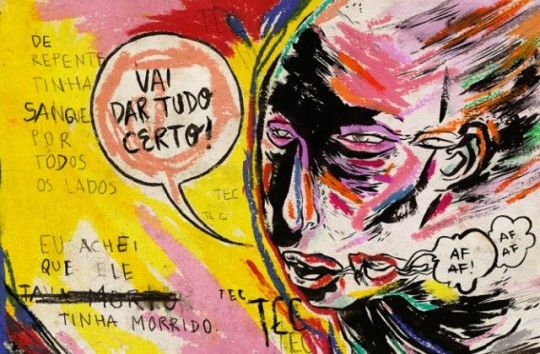
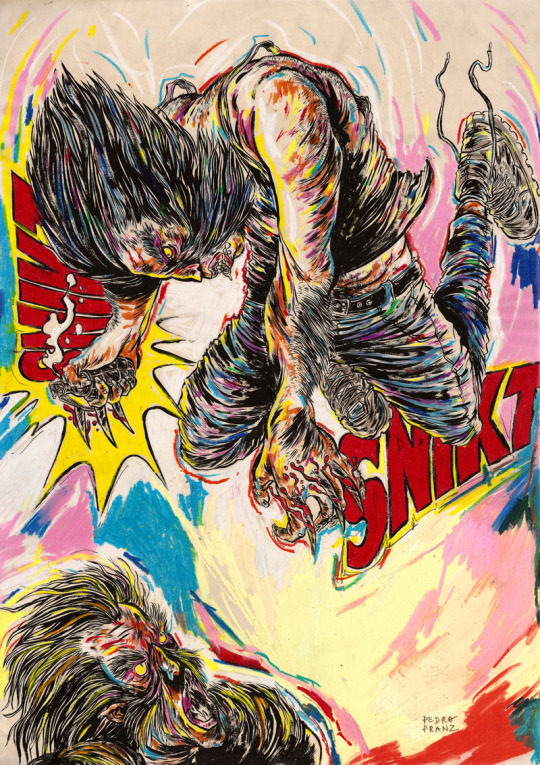
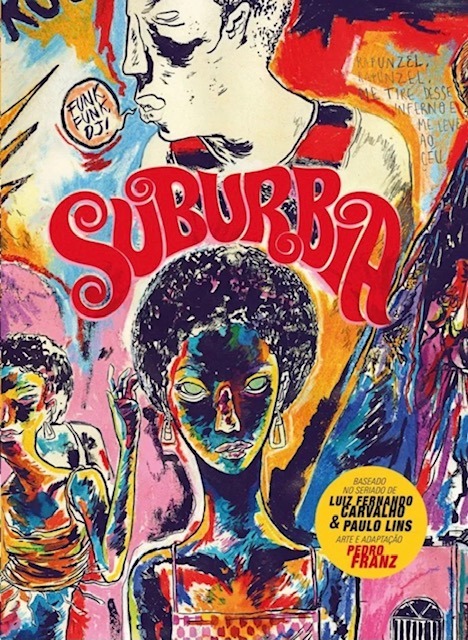


Richard Corben
Richard Corben was one of the contributors of elevating the comics to the category of Art, and of its unparalleled style of great influence among many current artists.
Richard Vance Corben was born in Missouri, United States on October 1940, in a family of farmers in the middle west ( where he started reading comics), and lived in Kansas City. There he studied Fine Arts, got married, had a girl and started working in local cinematography animation company. At the same time, he started to create and publish some underground fanzines. From the begging it was clear that he was interested in science fiction, eroticism, and total rejection of institutions ( the Army, the Church, etc), mixed with a lot of humor.
At a young age, Corben was an aficionado of bodybuilding, just like everyone who was interested in a persons aesthetics. The first character that he created, was Rowlf, a dog who took on a human form. In the beginning of the 1970s he amplified his work ( and his fame) in some underground magazines. And in 1971 he started working for the Heavy Metal publisher where he created one of his most famous characters, Den a large muscular man, who was always naked, and always after some adventure.
Corben has a very particular style, with unsettling mixture of caricatured, often satirical grotesque and intense,convincing realism. Never before had such wildly cartoonish worlds proved so convincing.
Also he can handle an exponentially higher standard because of his ability to use colour to show the effect of light on whatever he’s depicting. The way that he mixes light and colors in certain panels to differentiate those elements from each other, is something to admire.
Corben worked in a few mainstream comics, he always preferred to work with authorial works or working in specific themes like fantasy and science fiction comics and not so much on superheroes.
But probably the most famous mainstream comic that ever worked was the character Hellboy, along with writer Mike Mignola.
Hellboy is a series of comics that has a lot of mysticism, Norse mythology, horror and monsters. Something Corben certainly agreed to do, without thinking twice.
Richard Corben is one of my favorite artists, with a style that is perhaps not as realistic as an Alex Ross for example, but the humor and beauty that he puts in his characters is very unique.
Corben died on December 2, 2020, leaving a great legacy, for the world of comics and arts, with a very unique style and extremely stunning worlds.
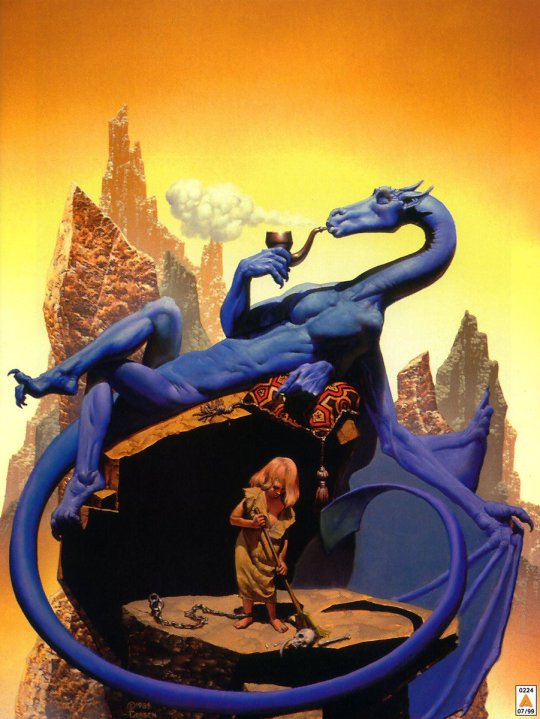
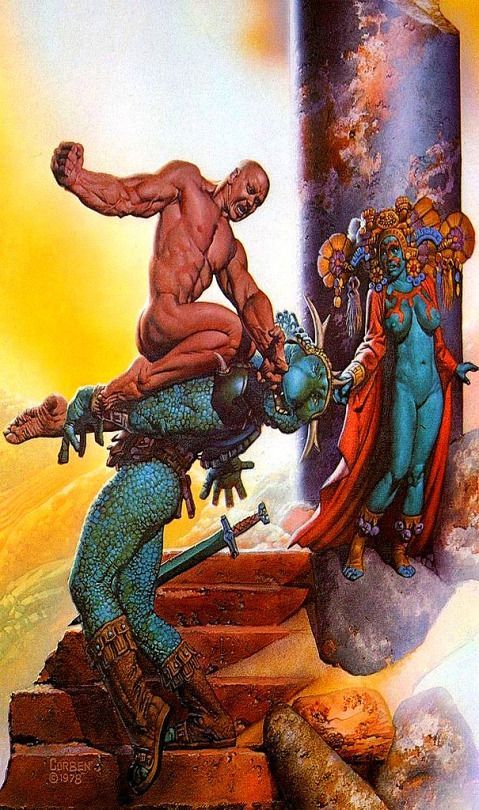
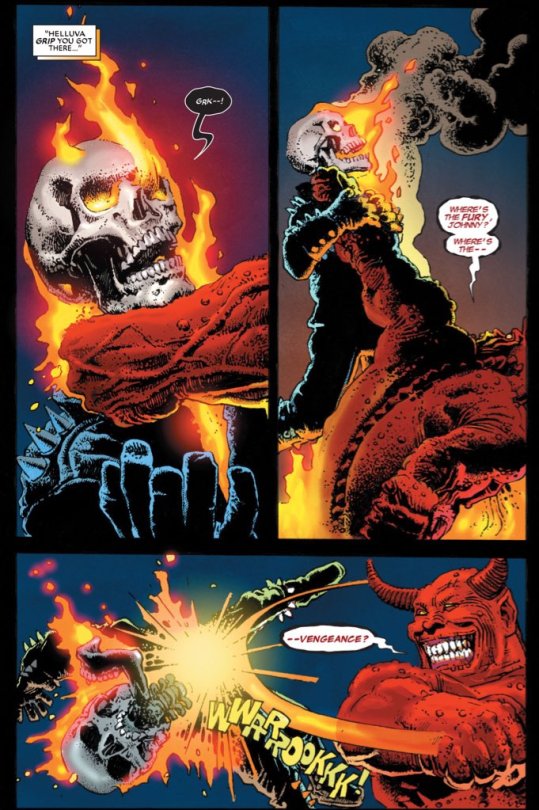

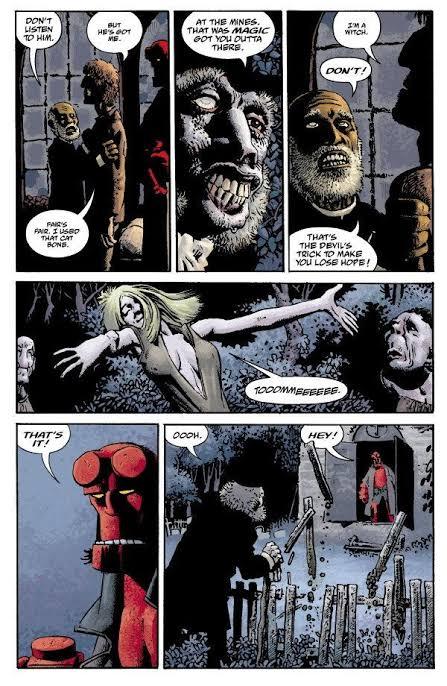
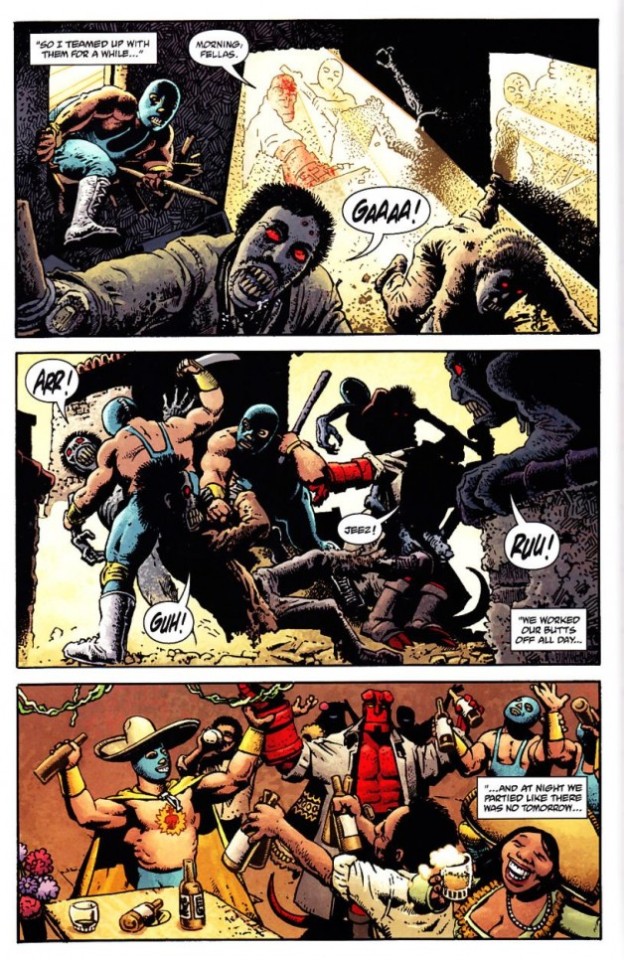
Charlie Allard
Charlie Adlard is a British comic book artist, who have worked on the comic industry for over 25 years. He spent the majority of his time since 2003 working in The Walking Dead along side with writer Robert Kirkman , until the last issue on 2019 He started reading comics when he was very young, and he said that he was very lucky to have influences of American comics and the more high art, such as Asterix and Tin Tin. He was fascinated by European comic books artists like Moebius, Alberto Uderzo and Herge. He started his career as many British artists and writers, working on 2000 AD, with characters such as Judge Dredd, Armitage and eventually Savage. In the United States he started working with the X Files, Astronauts in trouble, and of course The Walking Dead. Adlard started in The Walking Dead from issue 7, and brought a slightly different style, from the previous artist. Adlard's art is very cartoonish, but the universe of The Walking Dead still doesn't get silly because of it. Quite the opposite, the dirt and rot that Adlerd puts on his characters and the world, only sustains what a horrible world it is to live in. Many readers complain about Adlard's style, being very simple, that his characters are very similar, and sometimes it is difficult to identify them. But I believe that although his style does not vary much, when it comes time to show a horde of zombies, a devastated city, people feeling despair, and extremely disturbing scenes, Adlard manages to excel. Adlard's main tool is ink. All The Walking Dead magazines are in black and white, and he manages to give a lot of depth to the scenarios and characters using only a few ink stains. Today Adlard is doing some comics, mainly for DC, but says that he does not intend to work with Kirkman and zombies again, because he wants to explore other themes, and to innovate his drawing skills.
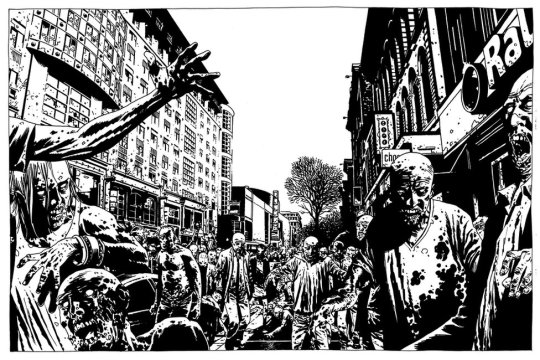

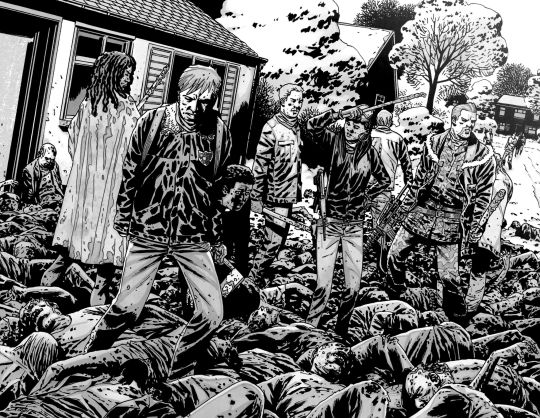
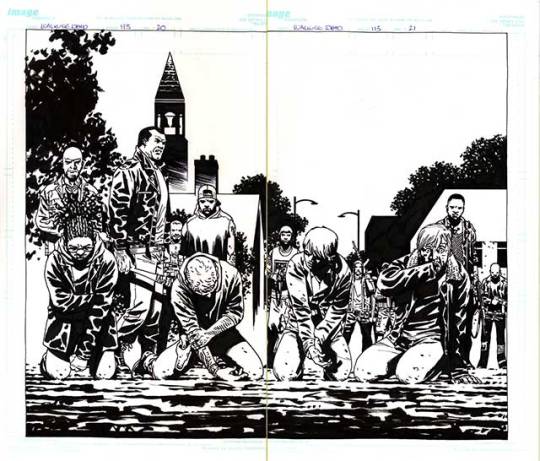
Zaha Hadid
Zaha Hadid was one of the most important and well known figures in contemporary architecture and design. With a singular trajectory, marked by a versatile, bold and out of the box style, she was the first woman to receive Pritzker Prize for architecture and was also the only female representative honored by the Royal Institute of British Architects with a golden medal. Zaha Hadid was born in Iraq, more precisely in the city of Halloween, in Bagdá, in the year 1950. Her family was of high class, her father being an important politician and her mother an artist. Still young, she traveled and studied in other places of the world, like London and Switzerland, but it was in her native land the she got her first formation, when she graduated in mathematics. At the age of 22, in 1972, she enrolled in one of the most famous independent schools of architecture in London, and there she gave the starting point to her career by studying and creating an important connection with the Dutch architect Rem Koolhaas, a figure that encouraged her and opened the doors for opportunities. Later in the 1980s, Zaha Hadid decided to open her own office. This, Zaha Hadid Architects was born, which made her name and talent recognized worldwide. Known for her works with futuristic lines, clean and pure forms, as well as the fragmentation of architectural design. Her projects and discussions raise issues that put architecture and its future to the test. This is because the architect seeks in her works to interrelate design, architecture and urbanism. I knew Hadid and some of her works, but it was the recommendation of my teacher Lauren, that I should look for this architect. As my project takes place in the future, she recommended that I look at some works by Zaha Hadid to get inspiration when creating the scenario for the comic. I find it very interesting how her works have this futuristic aesthetic , because it reminds me of science fiction films like Blade Runner with those skyscrapers and buildings with different shapes and sizes that are extremely imaginative that could only exist in films. With unique works and projects, famous for their exuberance, futuristic elements, curves, non linear shapes, distortions and fragmentations, Hadid inspired and generated fascination both for her constructions around the world.




Syd Mead
Syd Mead was a designer, best known for working on films such as Aliens, Blade Runner, Tron and Star trek. Mead was born in Minnesota, United States, on July of 1933, but five years later he moved to a second house in the western of United States prior to graduating from High School in Colorado in 1951. Some years later, he did the Art Center School in Los Angeles, where he graduated with great distinction in 1959. He was immediately recruited by the Ford Motor Company. At Ford he worked in the advanced styling department, creating futuristic concept car designs. But his imagination went beyond cars and he began to imagine clothes, helmets, buildings and scenery from hyper advanced civilization. After Ford, he also worked in other big companies like Chrysler, Sony and Phillips. After that he started migrating to the concept art world of movies. Mead is really important for generation of writers of science fiction, because many of them were influenced by Mead’s colorful paintings. Mead never wrote a novel or short story. He imagined the future in his mind and turned that imagination into illustrations. In 1979 he designed the extraterrestrial spaceship for the first film “Star Trek” in the cinema. Ridley Scott called Mead to design the buildings and flying cars of the futuristic Los Angeles “Blade Runner” in 1982. In 1986 he was hired to design the space station and vehicles of the movie Aliens directed by James Cameron. Almost at the same time, the designer created the electronic world of “Tron” for Disney studios. The same ones who hired him in 2014 to design the futuristic city of “Tomorrowland”. Mead died in 2019 after three years of lymphoma, he was 86 years old. He was a great influence for many designers and science fiction writers and illustrators, due for his creative worlds and automobiles , Elon Musk quotes Mead as one of his major influences, on visions of the automotive future and design in general.
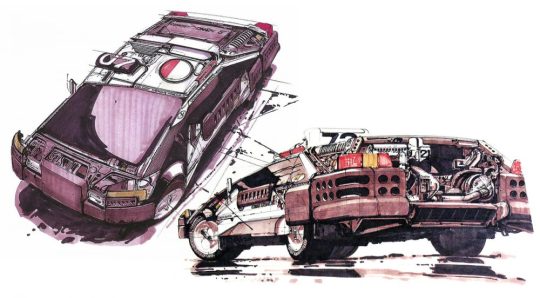
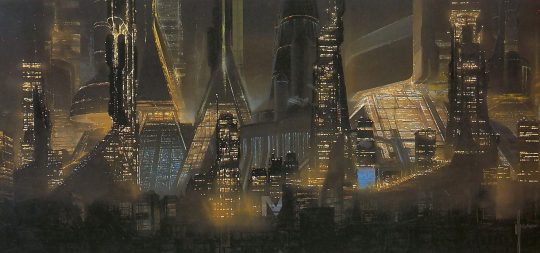
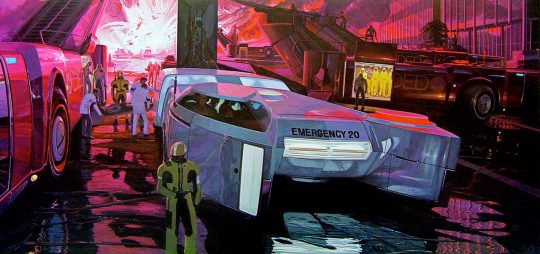
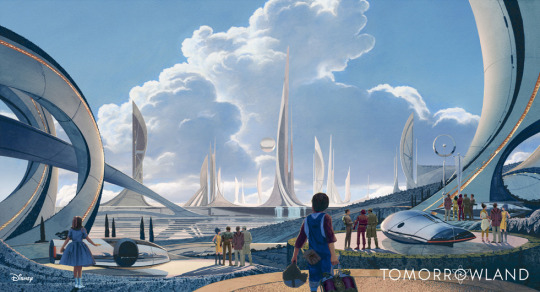

Transmetropolitan by Warren Ellis and Darick Robertson
Transmetropolitan is a comic written by the British writer Warren Ellis and the American illustrator Darick Robertson, published by the Vertigo label, and falls within the cyberpunk genre, and the problems that rampant technology will cause us.
Throughout the 60 issues of Transmetropolitan, Ellis and Robertson build a chaotic and brilliantly alive future, presenting a sci-fi society with a peculiar mix of elements of cyberpunk, political dystopias, bioengineering and transhumanism, sexuality, economics and much more.
In a dystopia, in a not so distant future, the journalist Spider Jerusalem is isolated for fiver years in a hut in the forest, but he has to return to the city to earn some money.
Throughout the comic, amid a nihilistic aura that humanity has no salvation, the author- Warren Ellis - criticizes the consumerism and futility. The illustrations, of Darick Robertson, is full of excesses as the environment should be, a brand of the style of the 1990s.
The search for the truth is the central theme of this work, and in the midst of all this we found ourselves in a investigative odyssey that involves the lowest scum of that society ( thieves, murderers and rapists) until reaches the highest of the scum ( the presidency).
This background allows the work to touch on the most profound social themes, and without fear of saying what needs to be criticized, this is where Transmetropolitan shines, and provoke deep reflections on issues such as racism, the influence of media, the power of religions, the education, and many other themes.
In short, Transmetropolitan dissects and criticizes everything, it points out the flaws, the lies and the hypocrisy of each one. It’s a study about the problems of democratic society in the 21th century.
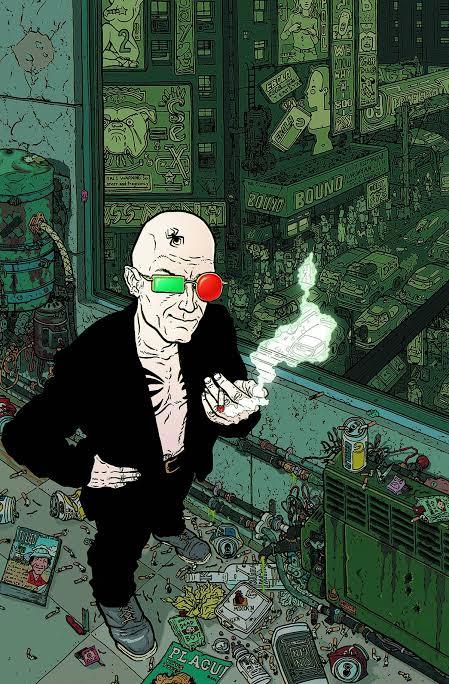
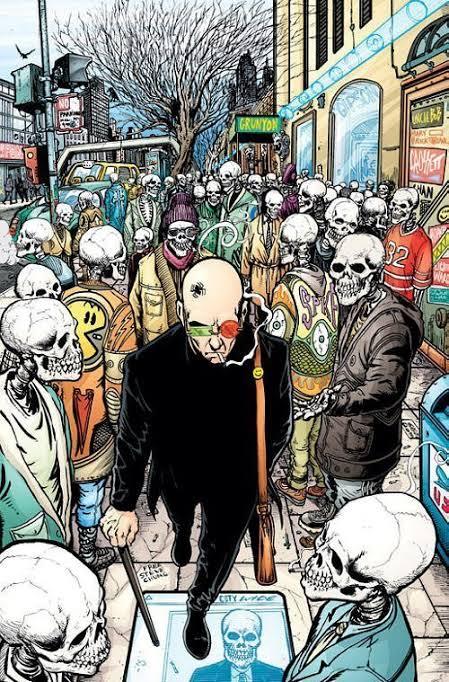
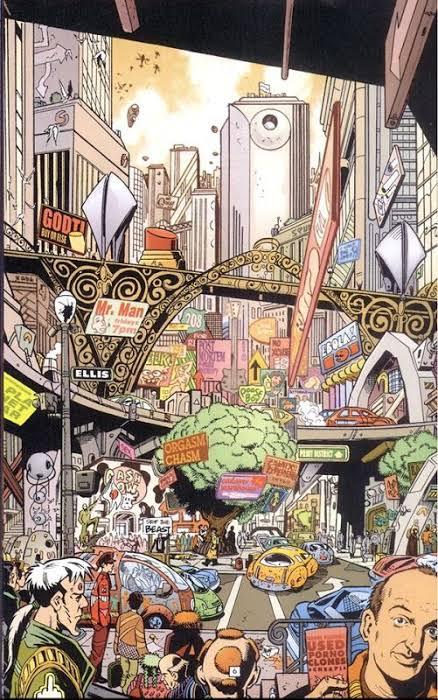
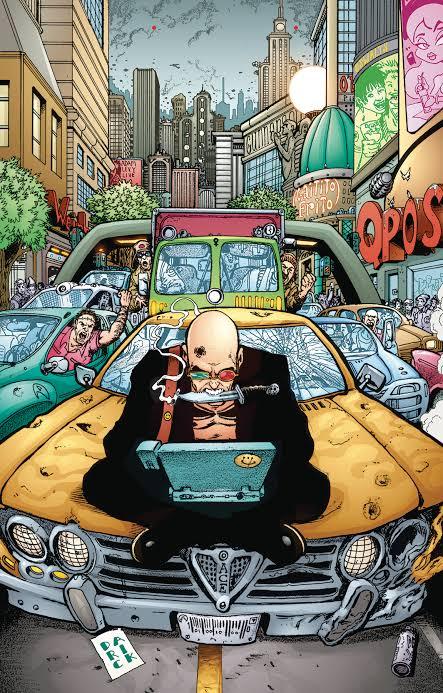
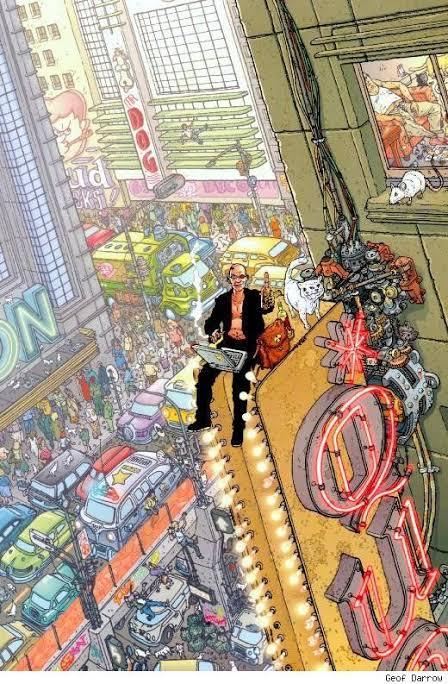
Jon Mcnaught
Jon Mcnaught was born in 1985, London, England. He work with drawing comics, and work as an illustrator, printmaker and lecturer. After spending several years on the Falkland Islands during his childhood, which will inspire his second book, Pebble island. The book pass years after the war, where he tries to recreate his childhood, with aspects of his curiosity, when he was exploring abandon bunkers, where it was just part of landscape, or somewhere where he could play. His work has essentially been landscape print-making (often situated in the city), but with quite simple intention of capturing the sense of space, light, time etc. His work is mostly about that, places that he was interested in depicting, and trying to reproduce the visual. He want the characters to feel like elements of a landscape or an environment ( he preferes to focus more on the background, than the characters itself). But usually he uses figures and postures to suggest expressions rather than close ups showing facial features. What I like about Mcnaught's work is that they are simple designs, but the colors are very vivid. The way he constructs the scenarios is very invective, because it doesn’t need to be extremely detailed, he just needs a few lines to show what he is talking about.
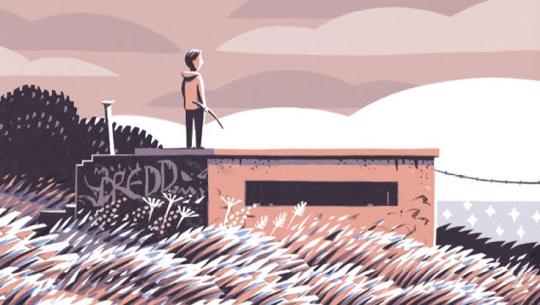


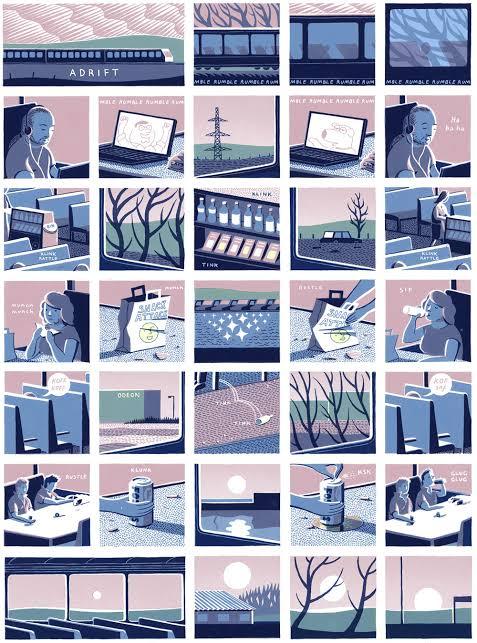

13 notes
·
View notes
Photo




History of Narnia + Event 1: WORLDBUILDING → “The Golden Age”
The Golden Age, an age of prosperity and peace, but also a time of resolution and with it conflict. While the people of Narnia thive, now they are able to grow their own food and provide themselves with their needs there are greater matters on hand for the four monarchs, namely the remains of the White Witch's Army which hold great influence in the world and seek aid from foreign powers on an attempt to restore Narnia to the world of the Age of Winter.
321 notes
·
View notes
Text
I know, my friends, that we live in a barbaric age in which the days of the great Roman Empire are sometimes looked on fondly, but the way they killed Christos was atrocious. Believe me, Absalom, an arrow in the lungs is a luxurious hot bath next to crucifixion. That was what the Romans did to Him. It was reserved for those they despised the most. It's the worst possible way I've ever come across for a man to die. No Roman noble or citizen could be crucified because it was considered a form of death unfair for free men. It was for slaves, thives, bandits and - of course - for those who rebelled against Rome. It all started with a thrashing. The soldiers triced you up and flogged you. They used a long whip with pieces of bone or metal studded in the end. The thong wrapped itself right around the body, tearing off flesh as it went. After three times thirteen lashes - sometimes more - there was more skin hanging off your back and chest than was left hanging on. Having softened you up like this, they made you lift a heavy wooden beam and stagger off to the place of execution. In Jerusalem at this time, it was a small hill outside the city walls called Golgotha, the Place of Skulls. Here there was a vertical wooden post six or seven feet high. When you got there, you were invited to drop the beam you'd been carrying. Then the soldiers knocked you over and lay the back of your neck in the middle of the beam. Then they stretched out one of your arms along the beam. A couple of the men held the arm down while another one took one of those big, long four-sided nails and hammered it through your wrist into the wood below. Having nails through the wrist is extremely painful. Believe me, I know. After they'd done this with the other arm, the whole execution squad lent a hand to lift up the crossbeam with you hanging from it, yelling your lungs out in agony, or maybe just biting your tongue, determined not to give those filthy bastards any pleasure by letting on you were suffering. But then you found it very difficult not to yell out when they actually lifted you off the ground. There was a hole in the middle of the beam roughly under your head. This they slotted into the vertical piece already wedged in the ground. Now they bent your knees upward until the sole of one foot was pressed flat against the vertical piece. Well fuck my old sandals if they didn't then produce another one of those big nails. A nail through the foot is more - much more - painful than a nail through the wrist. They hammered it through one foot, and when the point came through the sole of that foot, they hammered it through the other foot and into the wood. Then they would leave you alone. Some would watch, maybe they would take bets with one another on how long you'd live. After a while, it got boring, and they'd post a guard and go off to get drunk or screw a hog or whatever it was that legionaries did in their time off. About now, you'd wish that you were back in the barracks being flogged. If, by any strange mischance, you had not gone out of your mind, you might have time to wish they had flogged you harder because the flogging weakened you. And the weaker you were, the sooner you died. And death was the only thing you desired. Death was the only thing left. You didn't bleed much, but the pain was indescribable. The weight of your body hanging from your wrists pulled your chest upwards as though you'd taken the biggest, deepest breath ever. But you couldn't breathe out. To breathe out, you'd have to push upwards with your legs. Pushing up with your legs was indescribably painful because of that bloody nail running through your feet. At the same time, there was even more pain coming from cramps in your hands, along your arms and shoulders and chest. You were in all this pain, and you could hardly breathe. If you were really lucky, you'd bleed, or more likely suffocate, to death in perhaps five hours. If you weren't lucky, it could take days. And those clever, cunning, oh-so-bloody civilised Romans could vary it. They could hammer a piece of wood into the vertical piece, like a little seat under your arse. That meant it was slightly easier to breathe because you didn't have to push on your legs so much, so you hung there for longer. Or they could tie your arms to the crosspiece as well as nailing them there. That had the same effect. Maybe the sons of bitches used both methods. I've seen poor bastards spend nearly a week dying that way. If the Romans liked you - or your relatives bribed them - they could break your legs. That way, you couldn't push yourself up to breathe even if you wanted to, so you suffocated fairly quickly. So don't talk to me about the old Roman civilisation. I know they had central heating and straight roads and the greatest army the world has ever known, but at the back of all that they were the biggest shits in creation. Look, if some barbarian king back in the Dark Ages wanted you dead, what did he do? Cut off your head, or bludgeon your brains out, or drown you, or throw you off a high rock. All pretty quick. The Romans, being three times as clever and ten times as organised as any barbarian were a hundred times more savage in their methods of murdering people. And that's what they did to Yeshua Christos. Pilate, being Pilate, got his revenge on the priests for blackmailing him. Whenever someone was crucified, the law said that you had to have a plaque on the top saying what crime the victim was condemned for. Pilate ordered that the inscription read 'Yeshua of Nazareth, King of the Jews', and had it written in Latin, Greek and Hebrew to make sure everyone got the message. This was hung around Yeshua's neck when He was on his way to the execution and then it was nailed to the top of the cross.
---
A treatise on crucifixion, from the short story ‘The Wandering Christian’ by Eugene Byrne and Kim Newman
0 notes